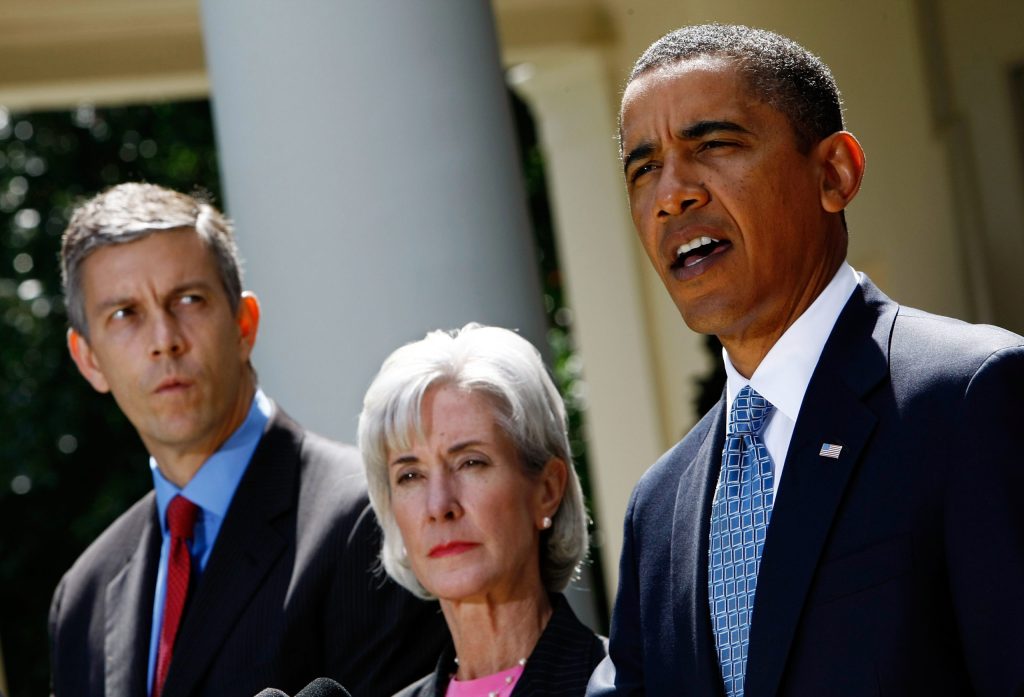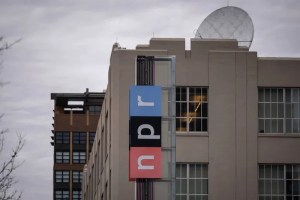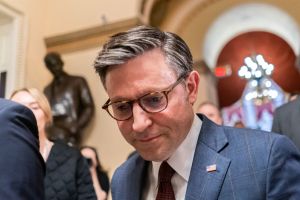Donald Trump declared a national emergency on Friday over the spread of COVID-19, promising to dedicate $50 billion in funding for states to fight the virus. The order is the latest in a line of actions taken by the administration to try to stem the spread of the virus: major restrictions on travel from China and the European Union, convincing insurance companies to waive copayments on Coronavirus testing, and loosening FDA restrictions on testing, among others.
‘We will overcome the threat of the virus,’ President Trump said during a news conference in the White House Rose Garden.
The Trump administration’s response to the coronavirus, plus changes in social behavior like social distancing, washing hands more often, and avoiding touching others, shows how much — and also how little — the country has learned since the H1N1 outbreak in 2009.
Trump made his national emergency declaration a little less than two months after the first reported case of coronavirus in the United States. Comparatively, it took former president Barack Obama at least twice as long to do the same for H1N1, also known as swine flu. Obama initially declared a public health emergency in April after there had been 20 confirmed cases of H1N1 in the US. The World Health Organization (WHO) later declared H1N1 a global pandemic in June, and Obama declared a national emergency in October.
In the meantime, the Center for Disease Control (CDC) estimated there were between 14 million and 34 million cases of H1N1 between April and October 17 and between about 2,500 and 6,000 H1N1-related deaths. There have been 41 coronavirus-related deaths in the US thus far.
Coronavirus and H1N1 are not perfectly analogous — H1N1 had a fatality rate of 0.02 percent, while preliminary estimates for the coronavirus fatality rate place it at between one and four percent, and the coronavirus spreads at a faster rate. But the government has reacted much more quickly to match the severity of the coronavirus, as has wider society. The NCAA has canceled the men’s March Madness basketball tournament, the NBA canceled the end of its season, and the NHL is postponing its 2019-20 season. Colleges and universities are suspending in-person classes. Political organizations and campaigns have canceled large gatherings of over 200 people.
Approximately 16 to 25 percent of Americans during the H1N1 virus said they avoided ‘places where many people are gathered, like sporting events, malls, or public transportation,’ and 20 percent said they had ‘reduced contact with people outside [their] household as much as possible.’ Just a couple of weeks after Obama declared a national emergency, he hosted 2,000 young children at the White House to go trick or treating on Halloween.
One notable area where the Trump administration appears to have dropped the ball is on the accessibility of testing kits. Only about 11,000 people have been tested for coronavirus, which means the number of actual cases could be much higher than reported. Ronald Klain, a former chief of staff to Joe Biden, claimed that the Obama administration ‘tested 1 million people for H1N1 in the first month after the first US diagnosed case.’
‘If you go back to the swine flu they didn’t do it like this,’ Trump said. ‘We’ve gotten it very early.’
Trump has blamed the slow rolling out of testing kits on FDA regulations and the CDC ‘system’, but claimed Friday that through a public and private health partnership, five million tests will be available ‘very shortly’.
The president’s response to the coronavirus has been far from perfect: during a Wednesday night address, he incorrectly claimed that there would be a partial ban on goods from Europe (goods are not affected), that all of Europe was subject to a new travel ban (the UK and Ireland are exempt), and that industry leaders would ‘waive all copayments for coronavirus treatments’ (they are only waiving copayments for testing). But his national emergency declaration Friday, delivered with the assistance of health and business leaders, seemed to assuage fears — the Dow Jones surged nearly 2,000 points during Trump’s news conference, the greatest point gain in history.



















